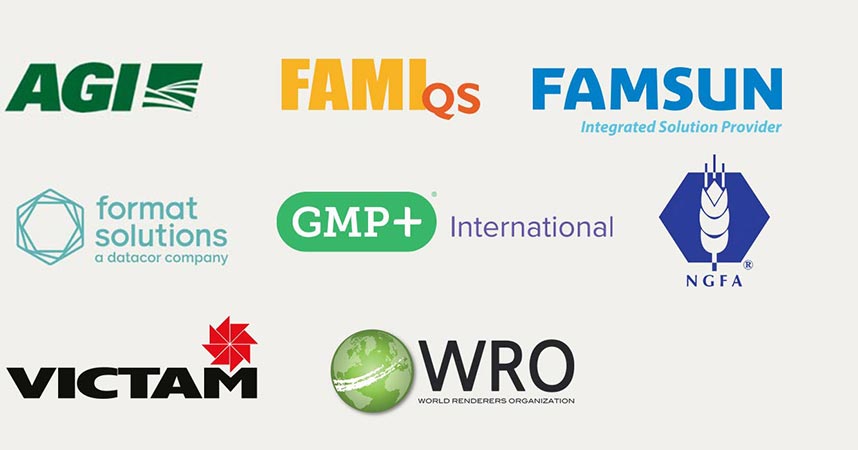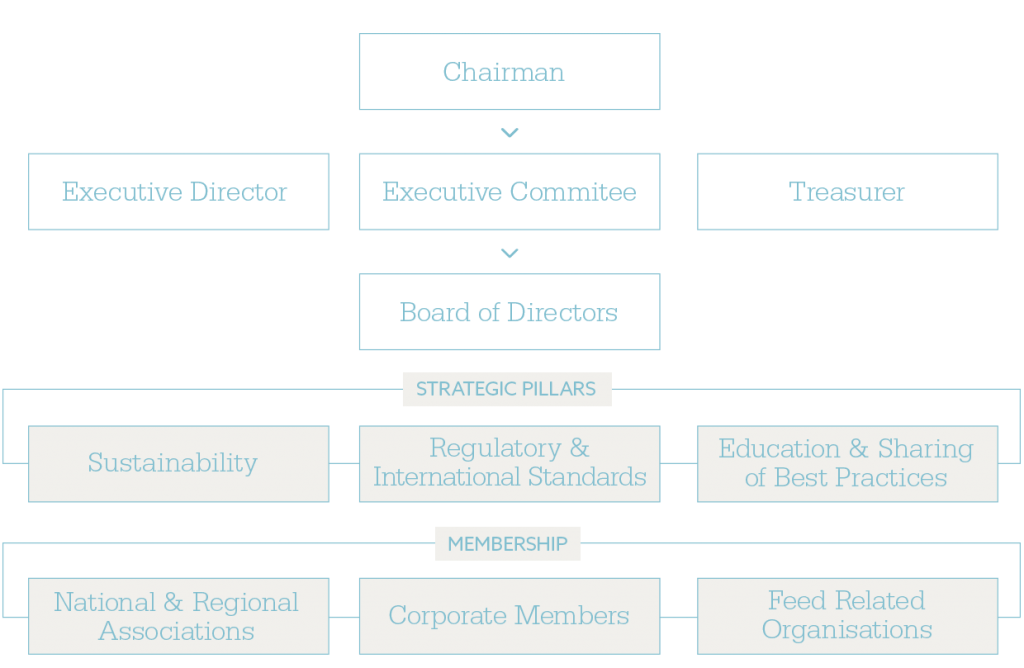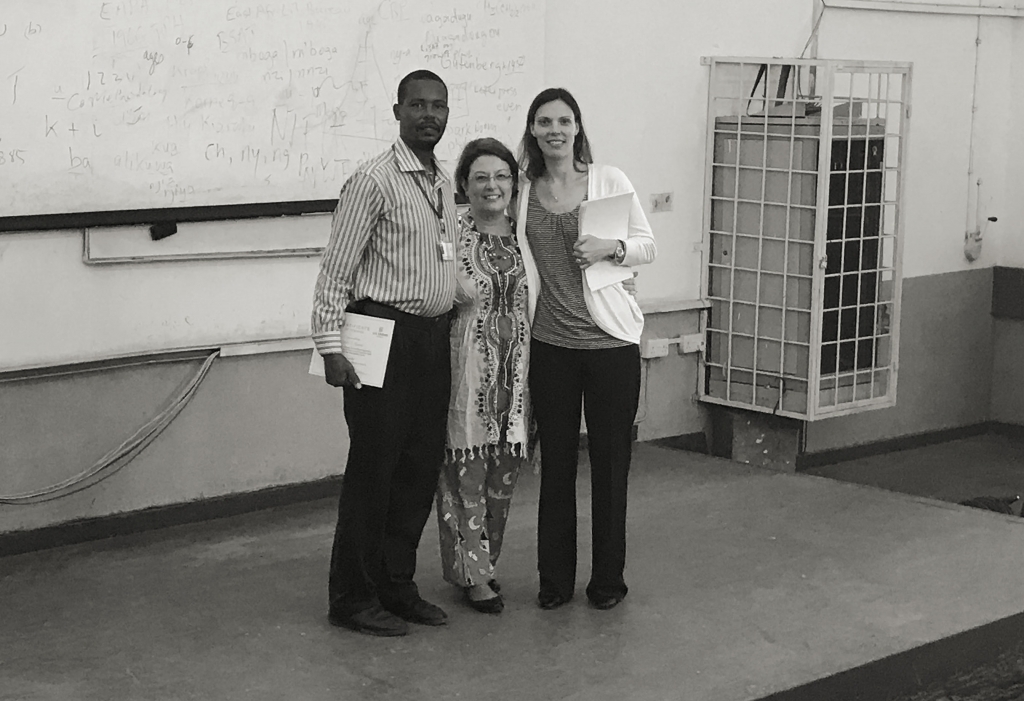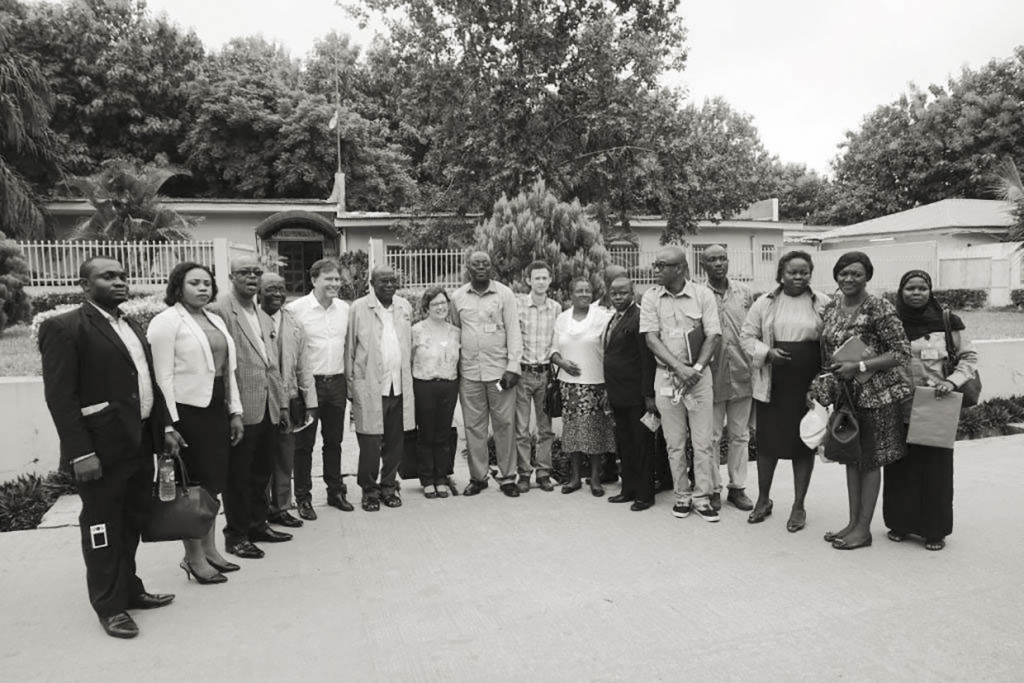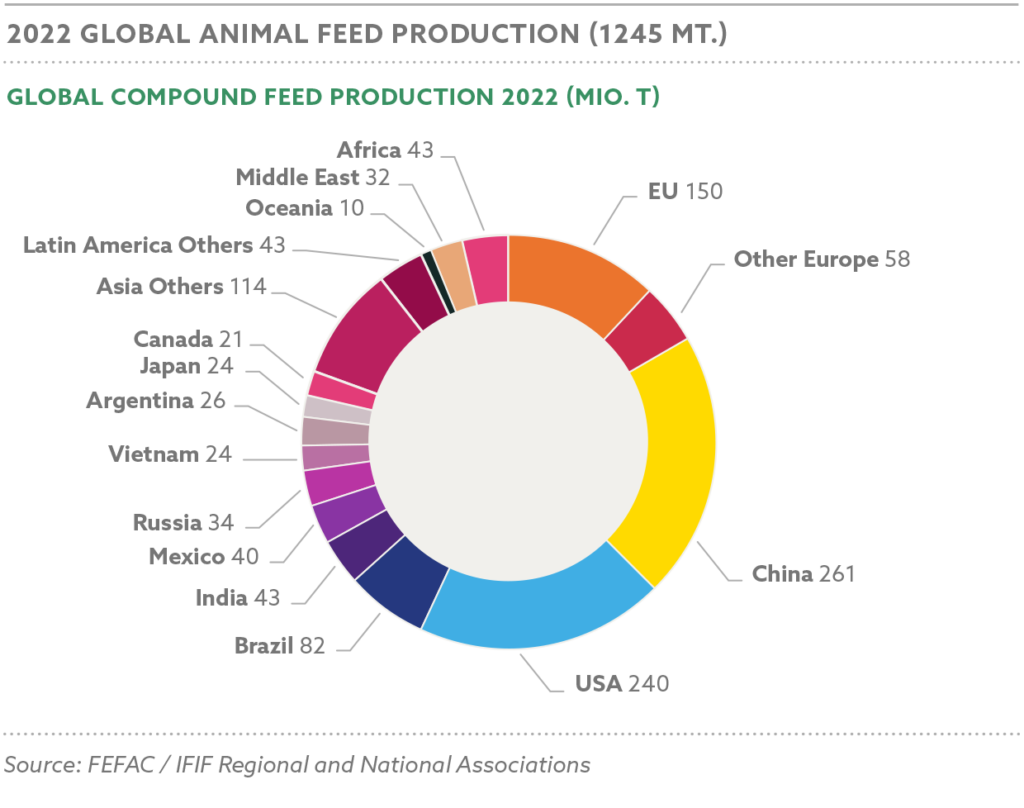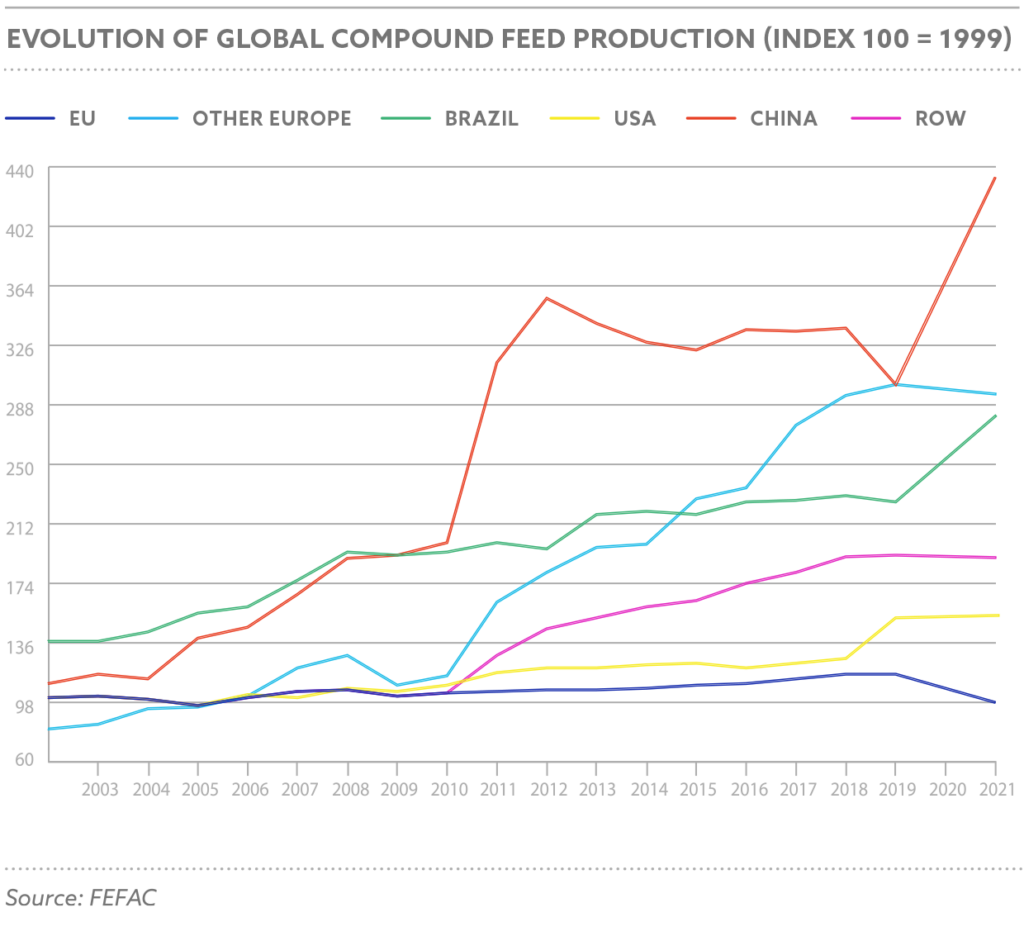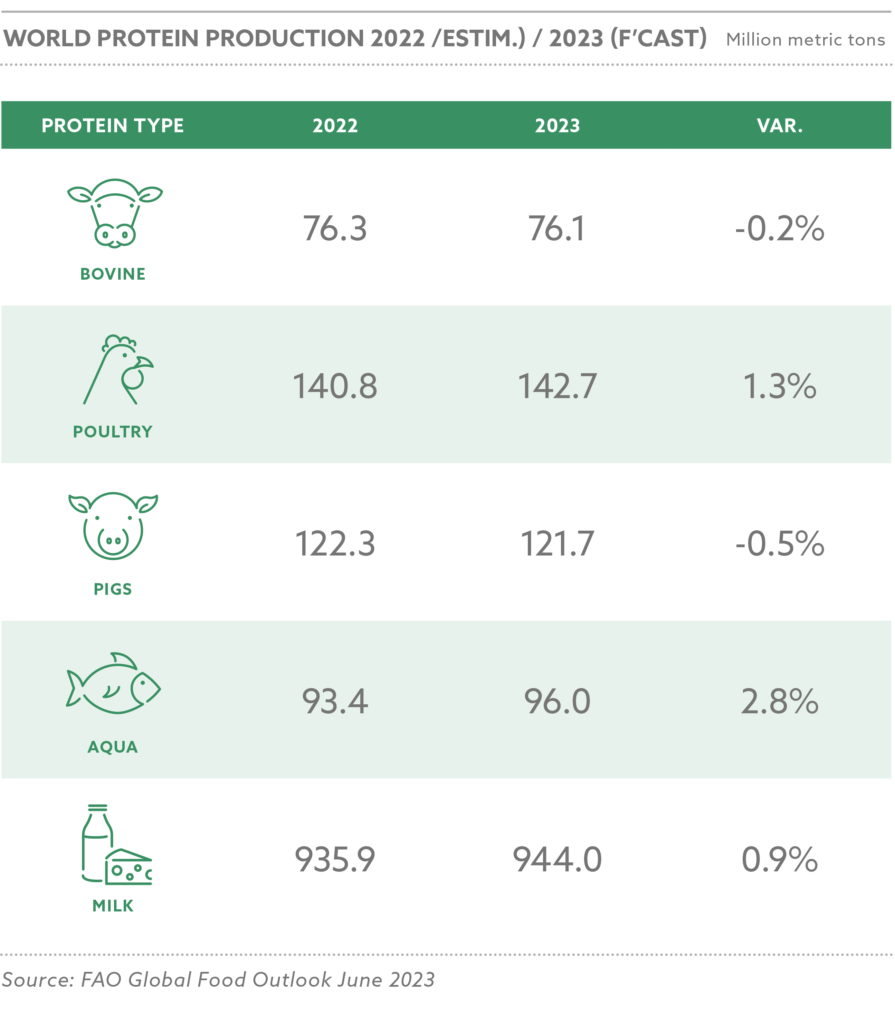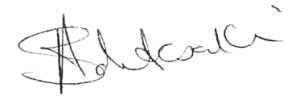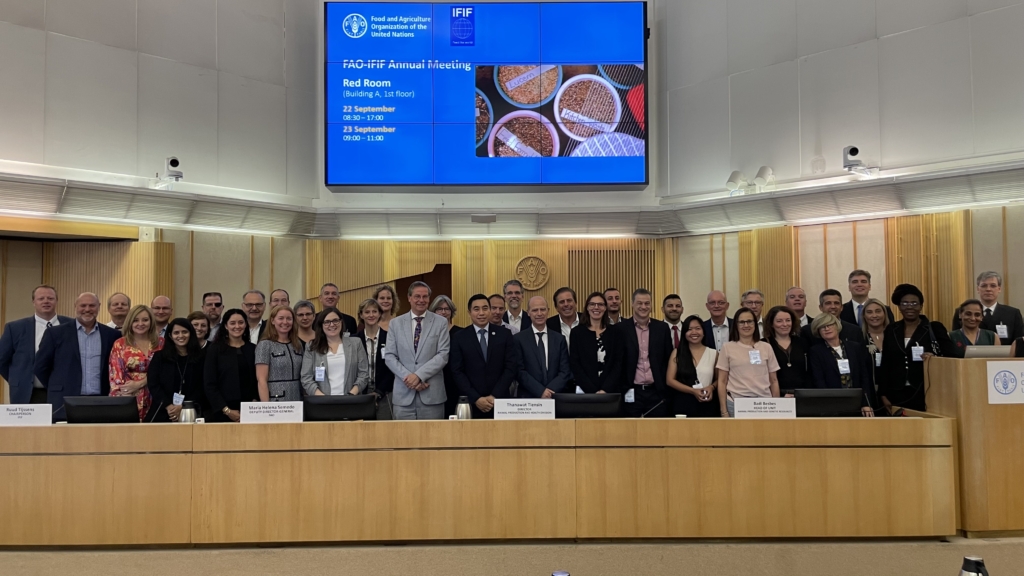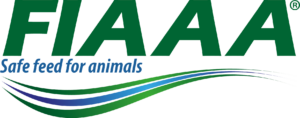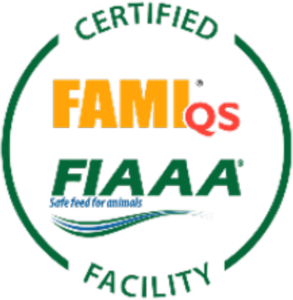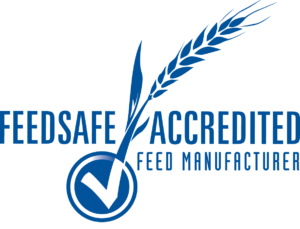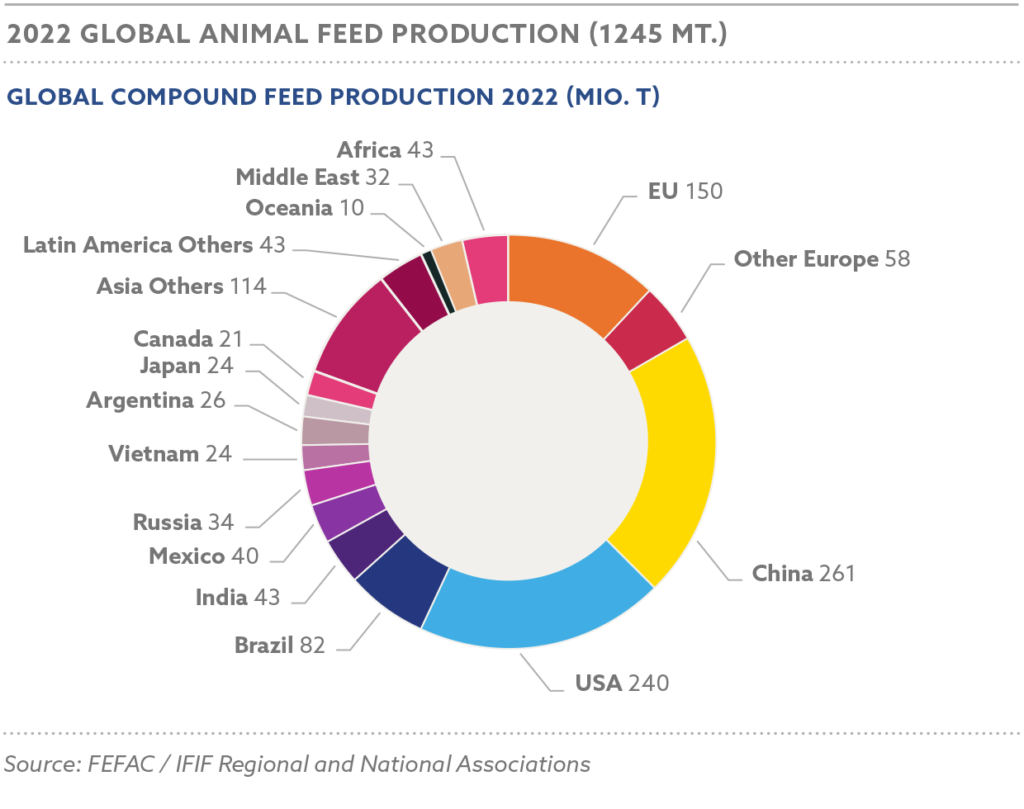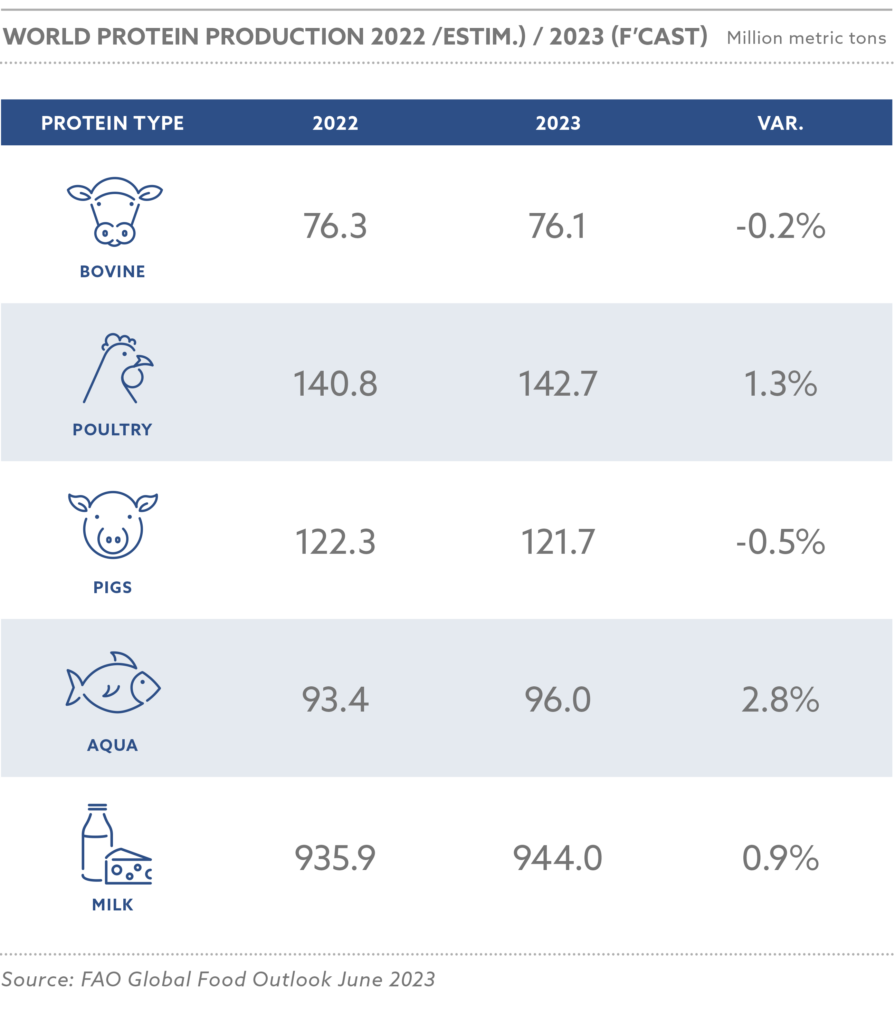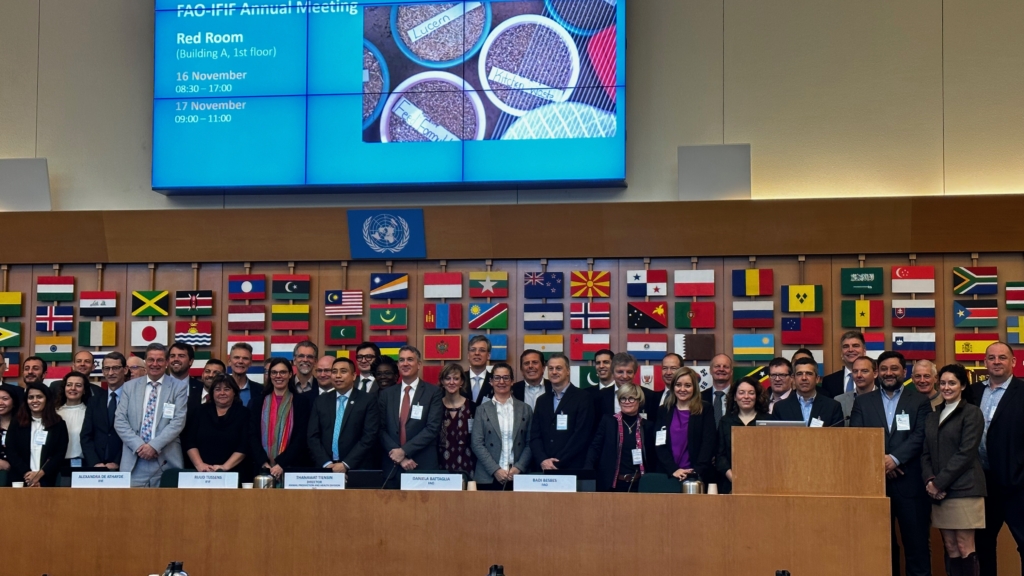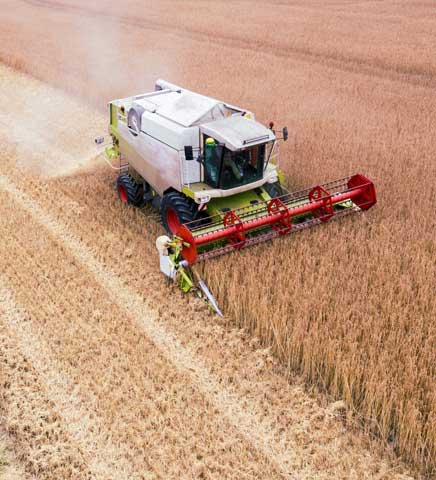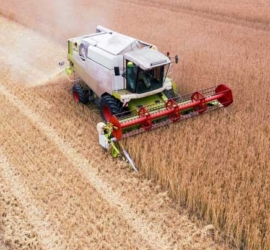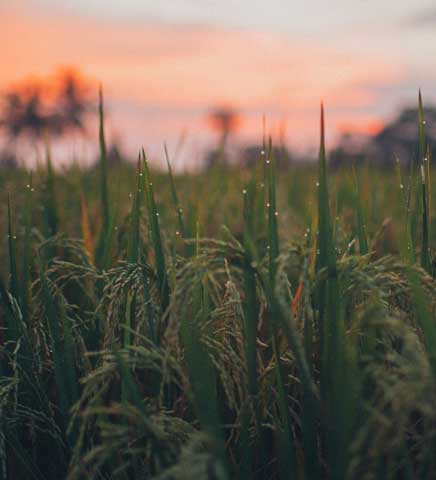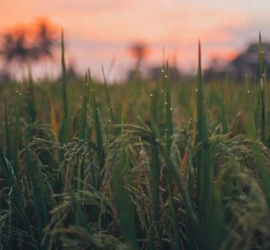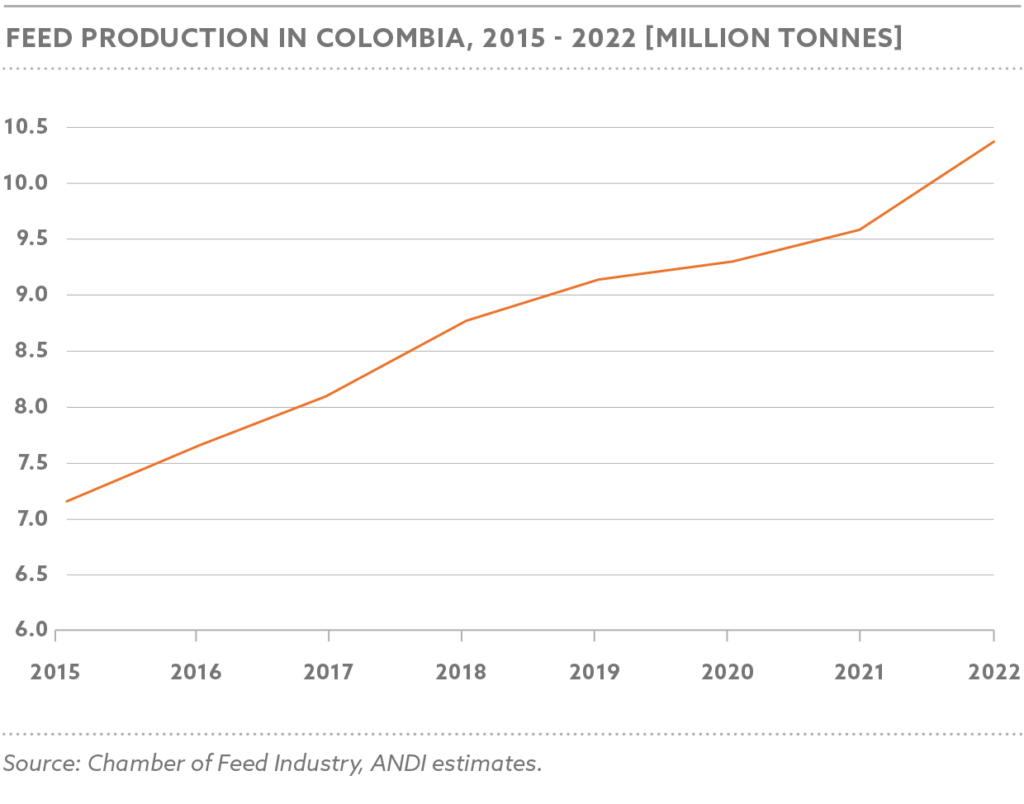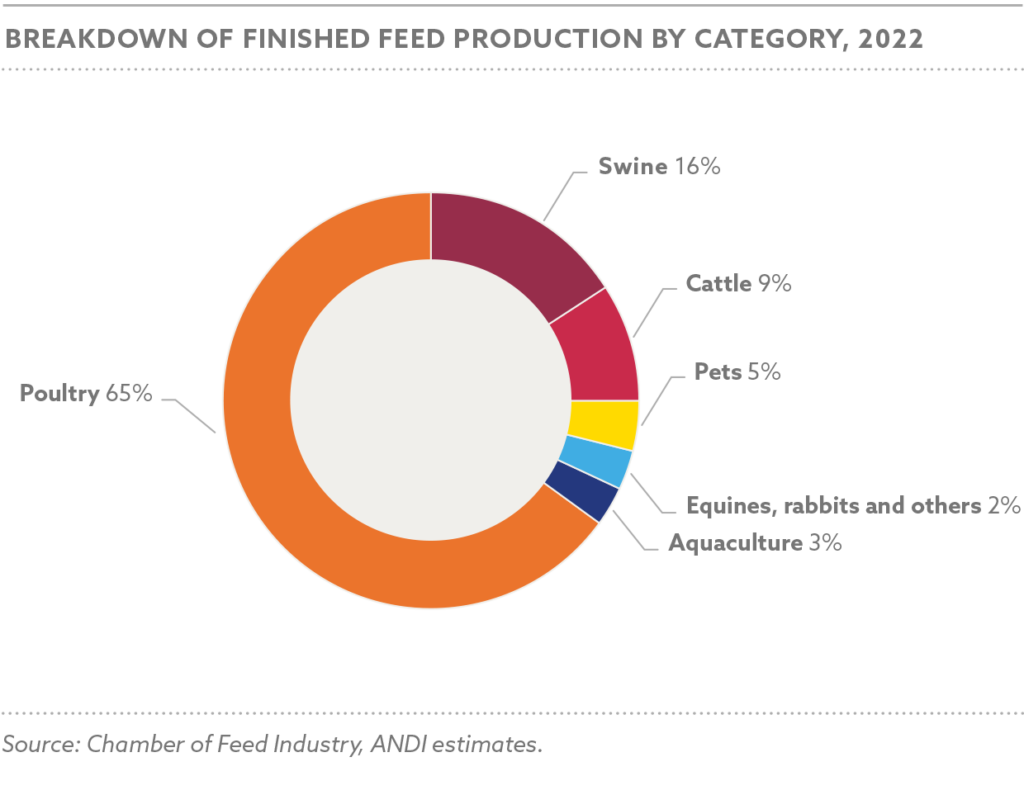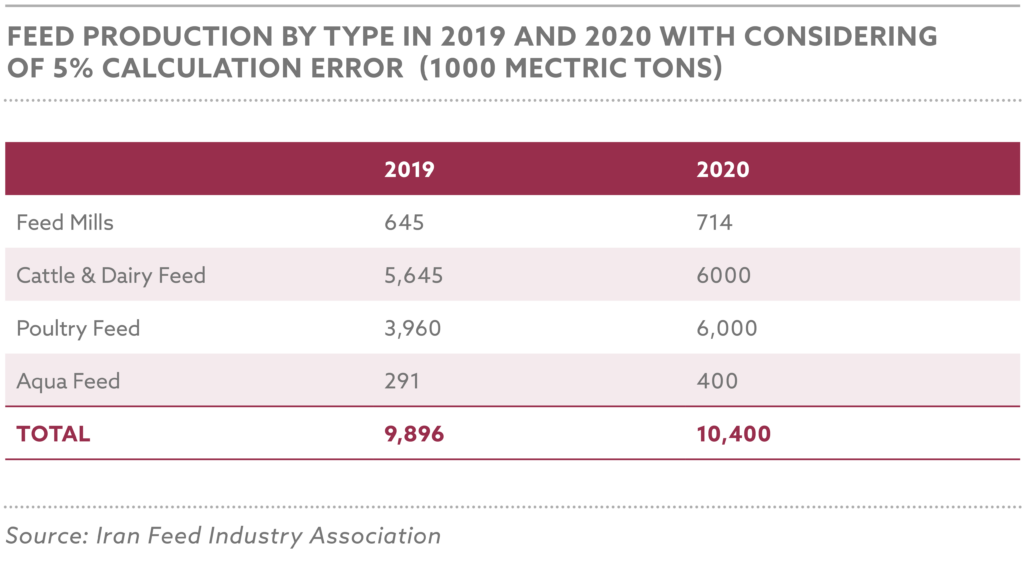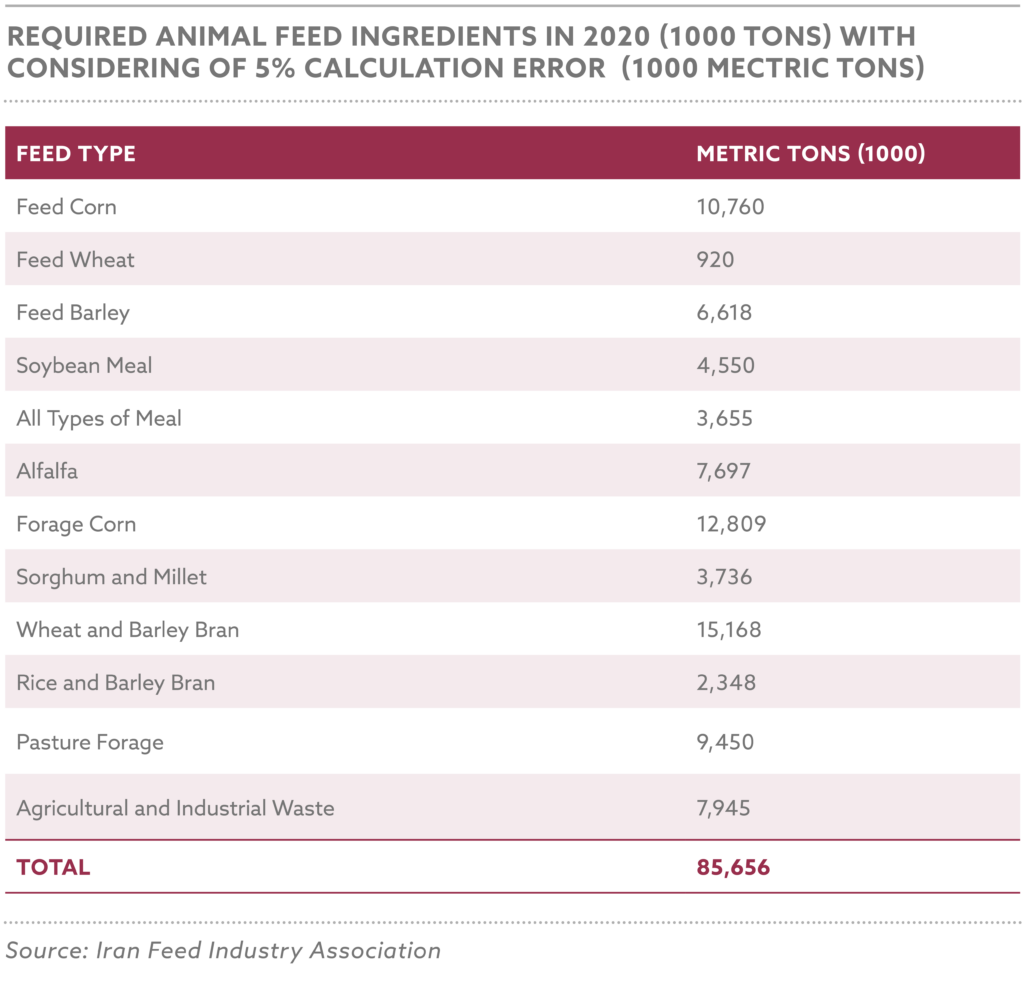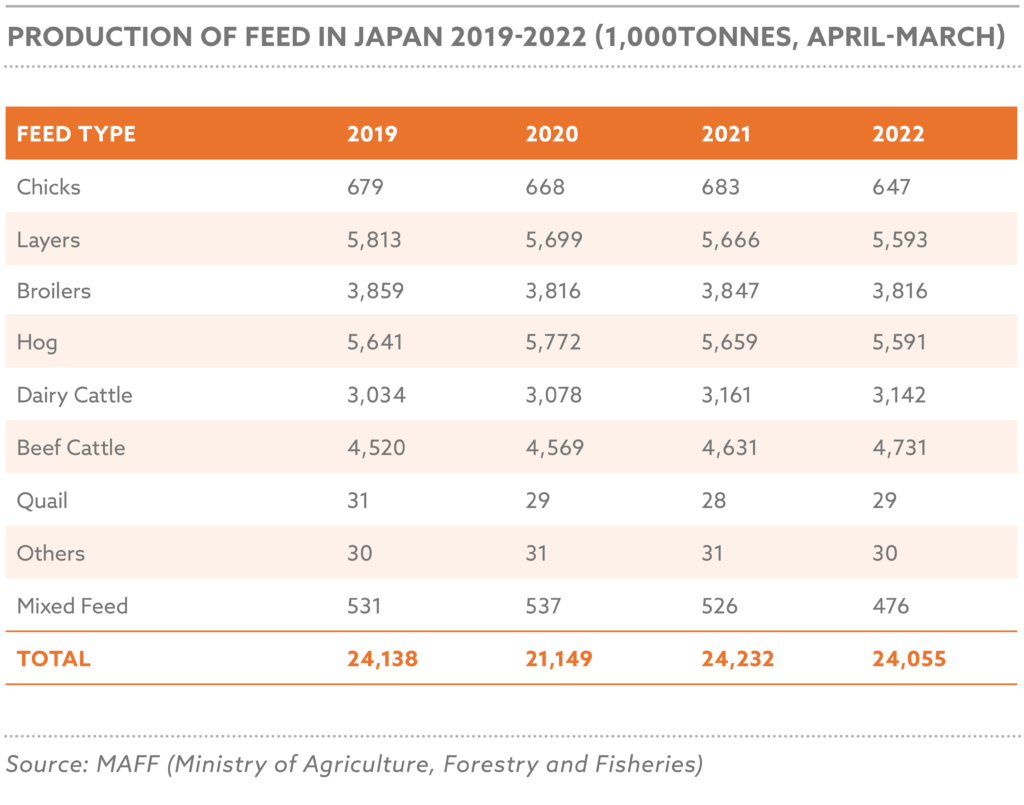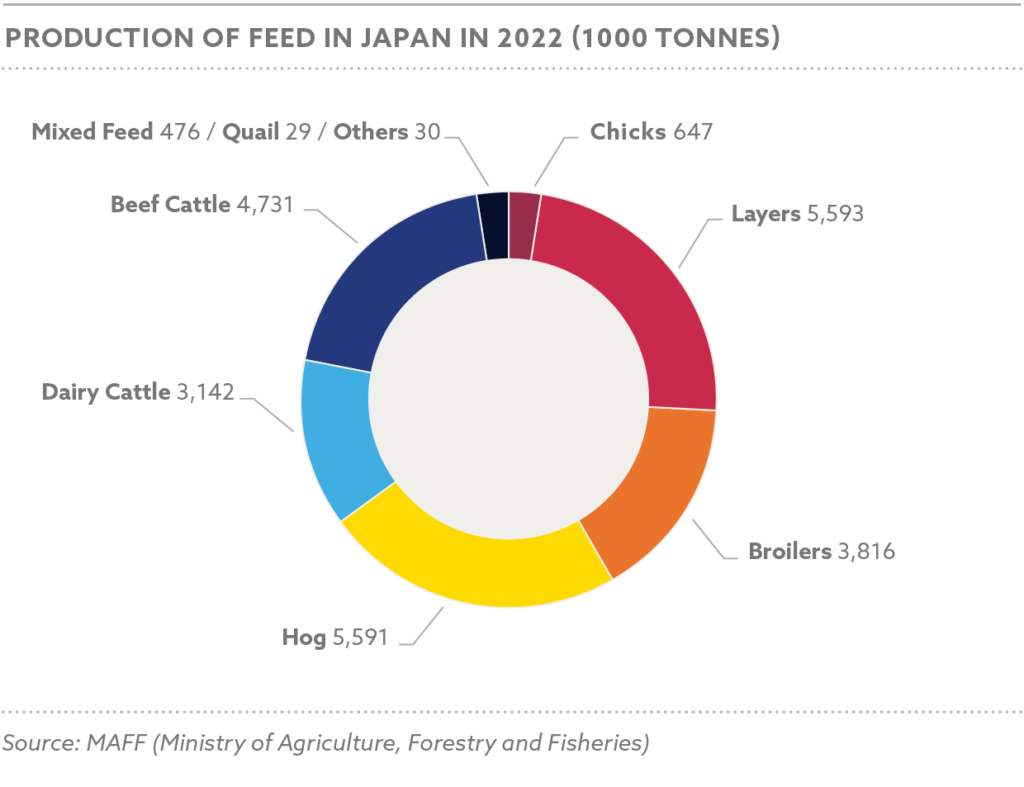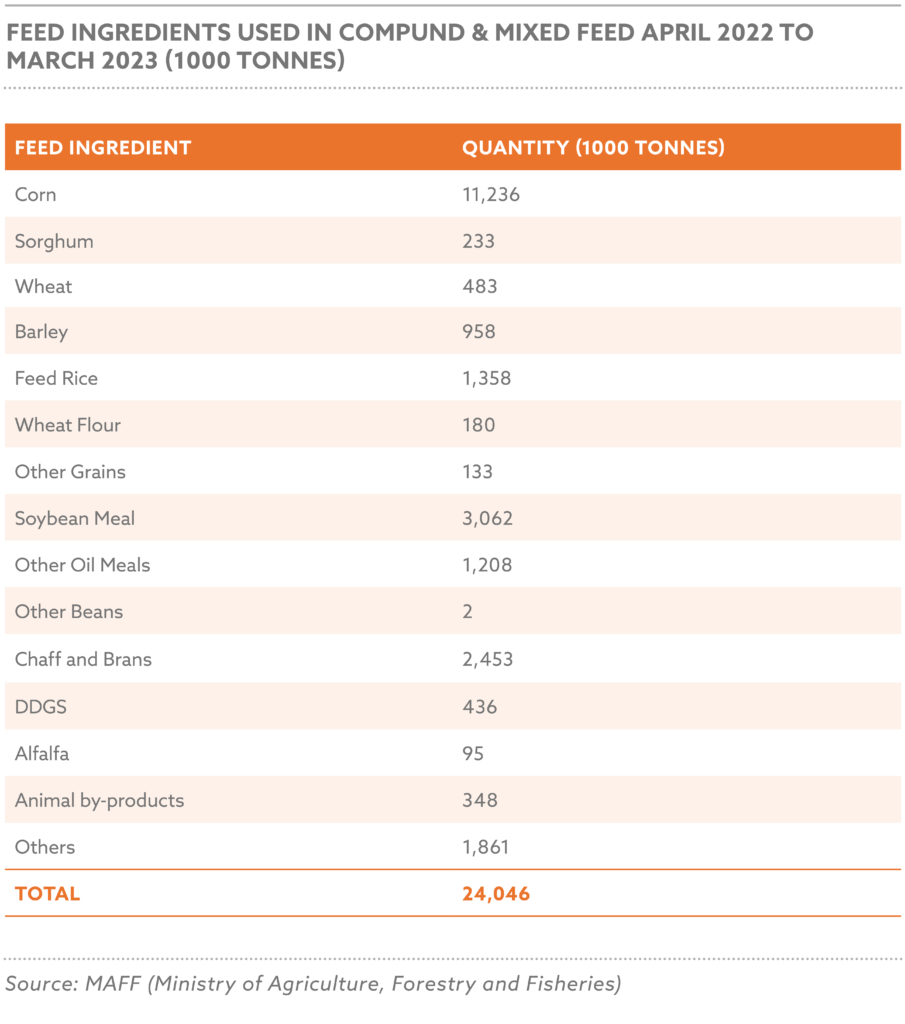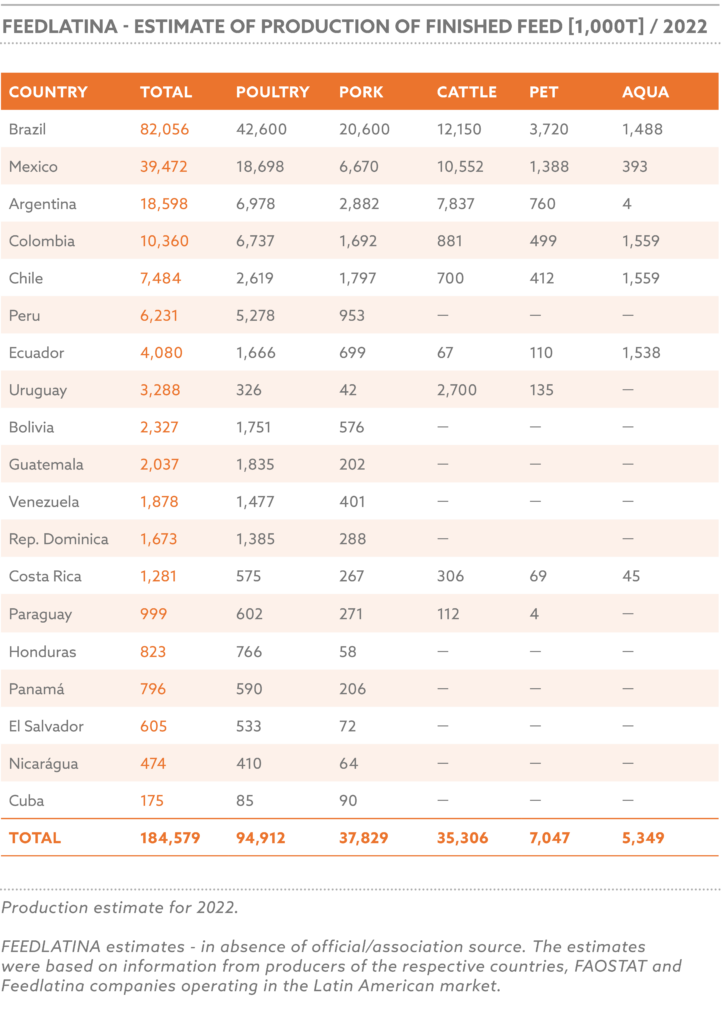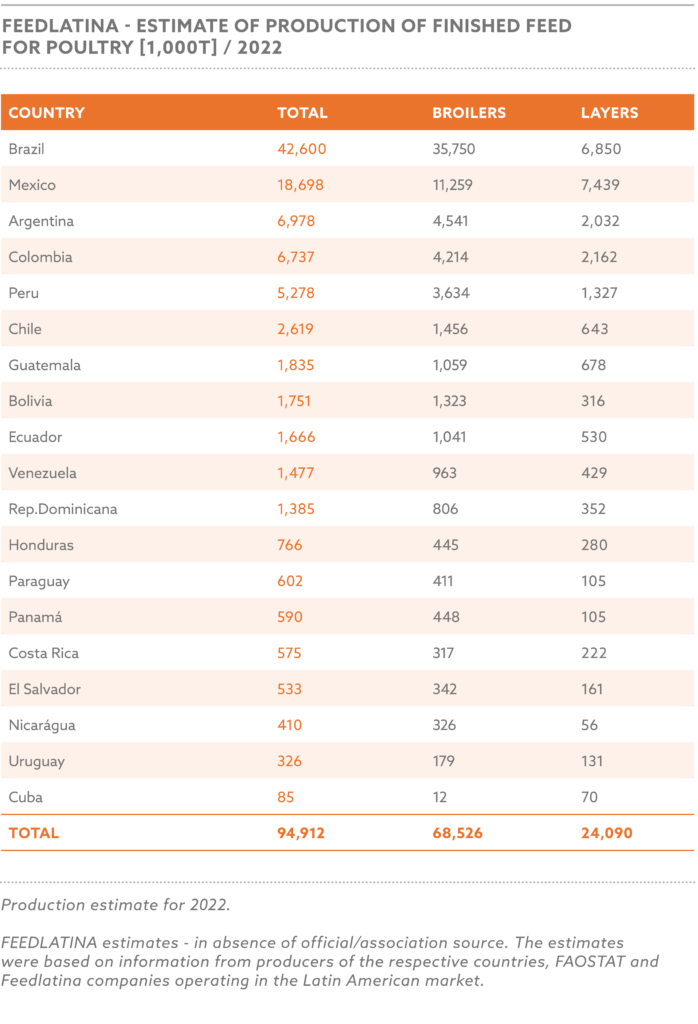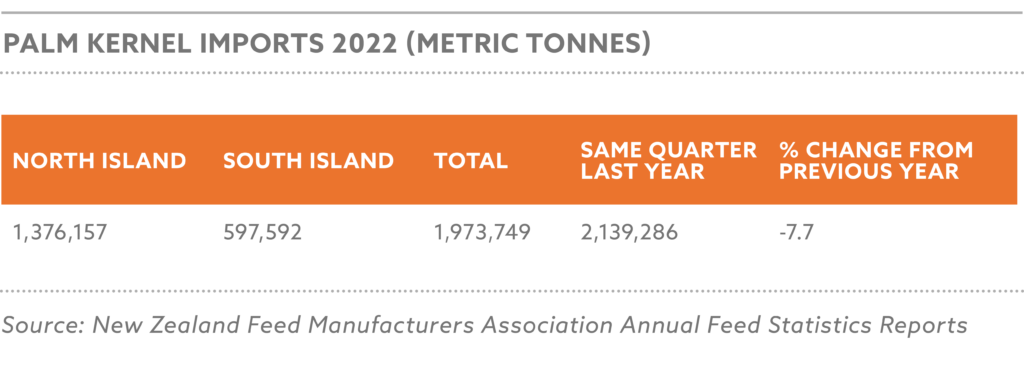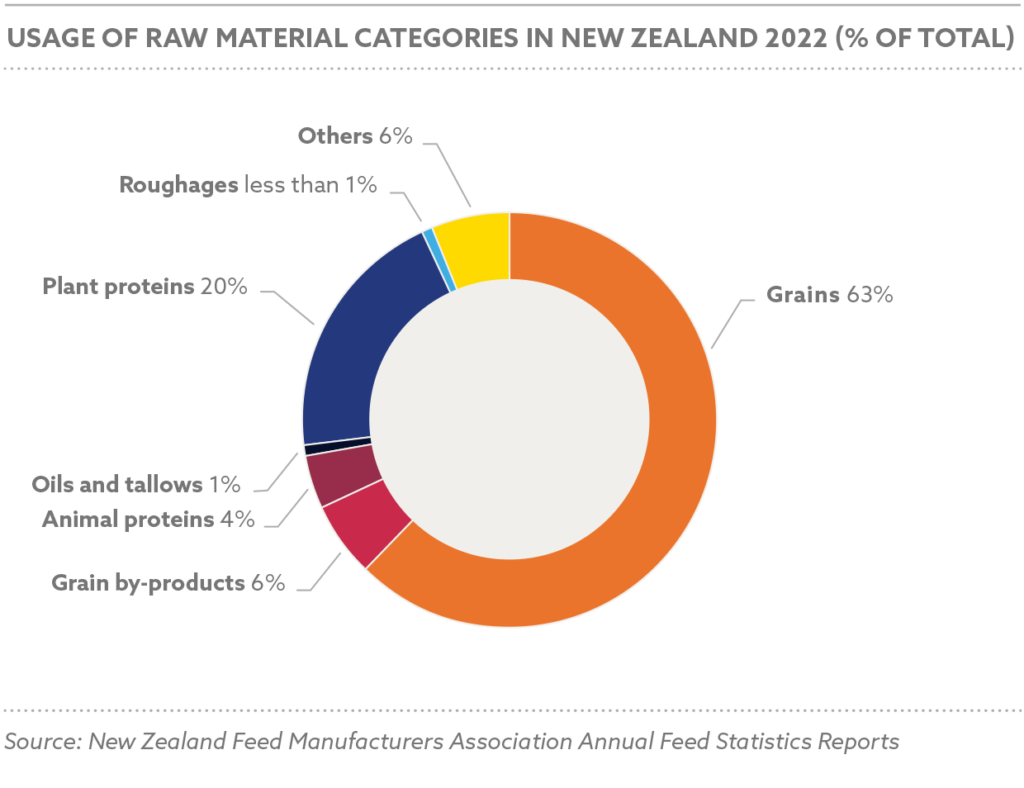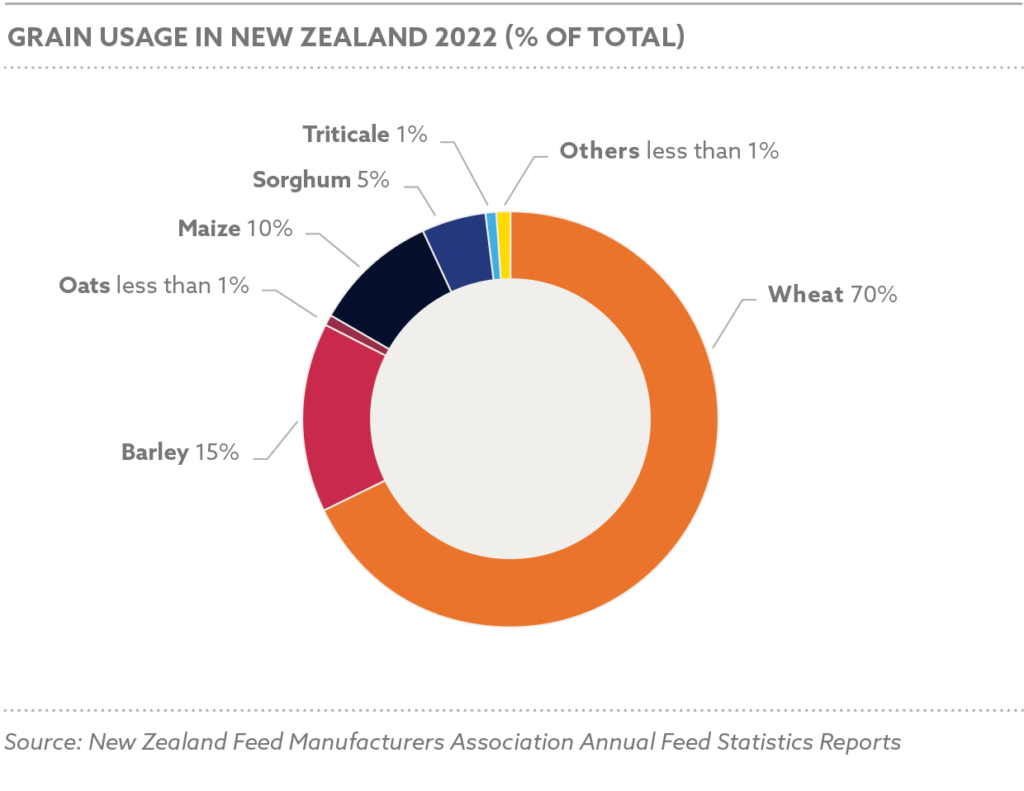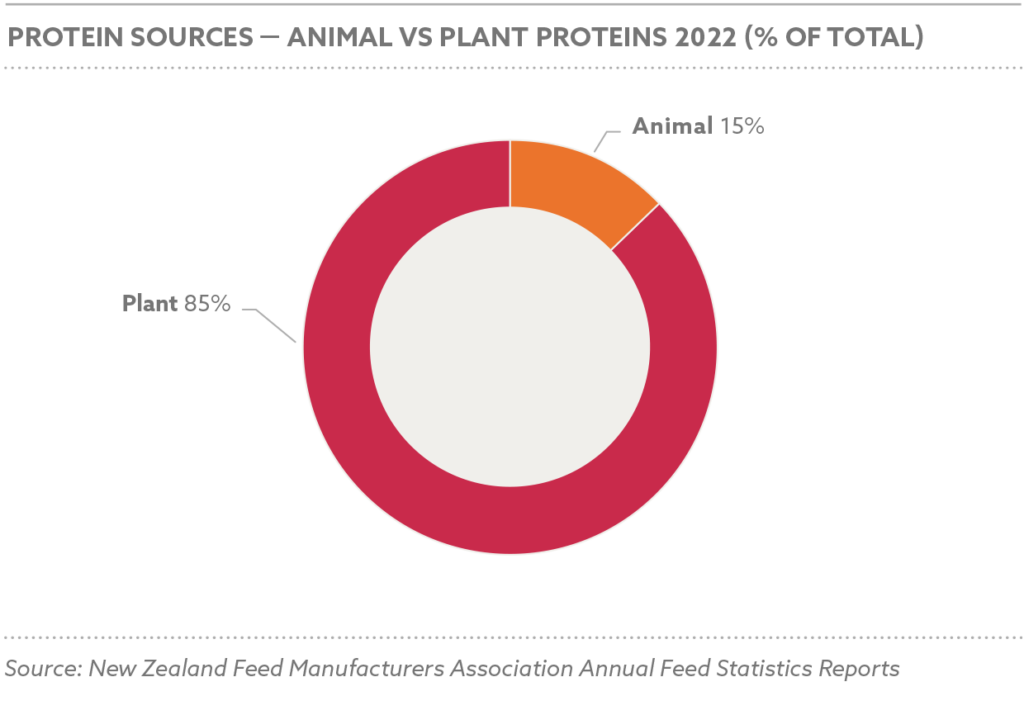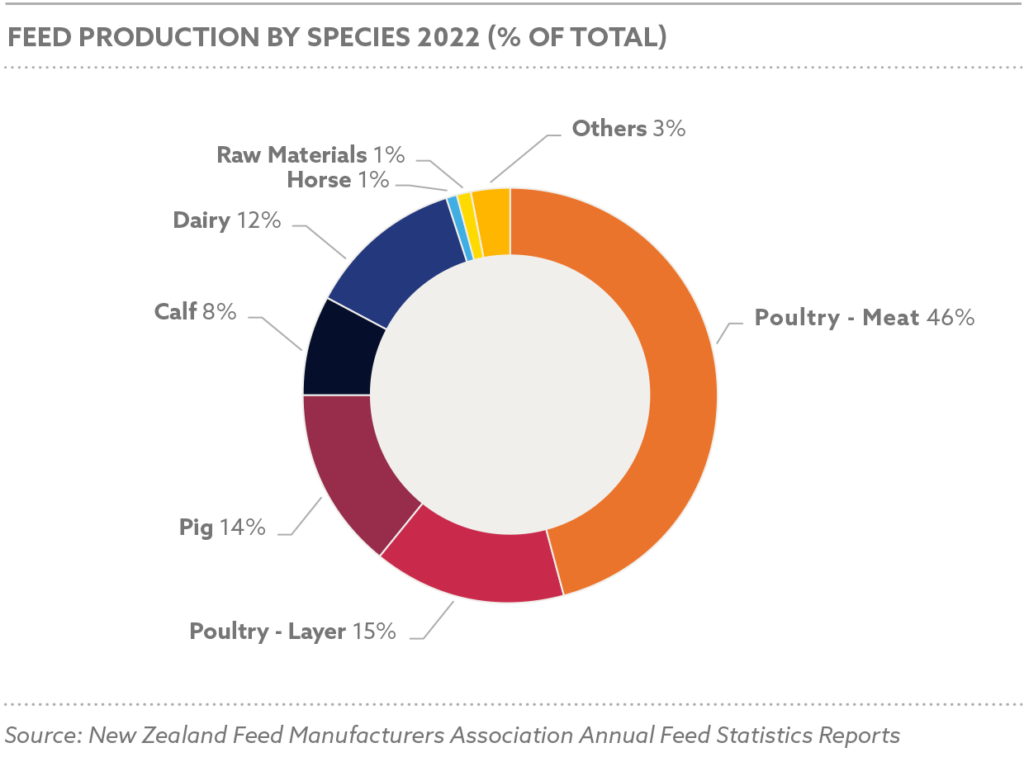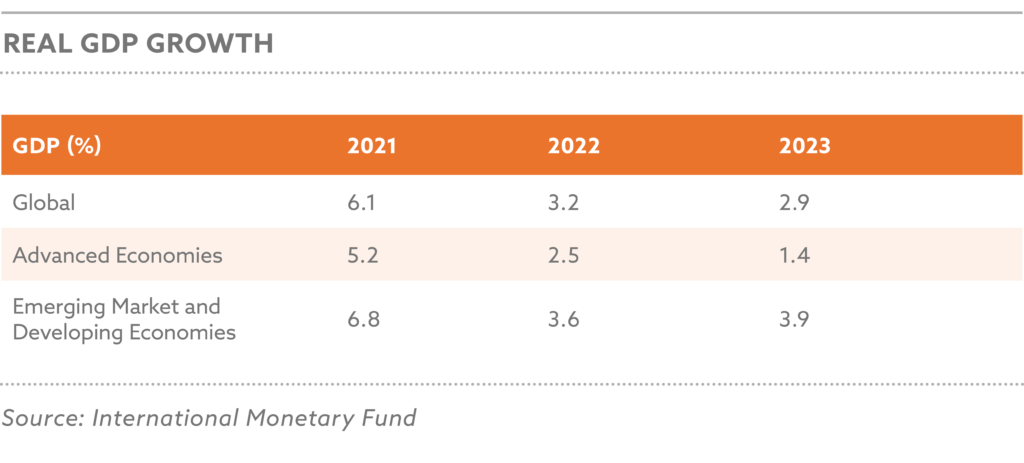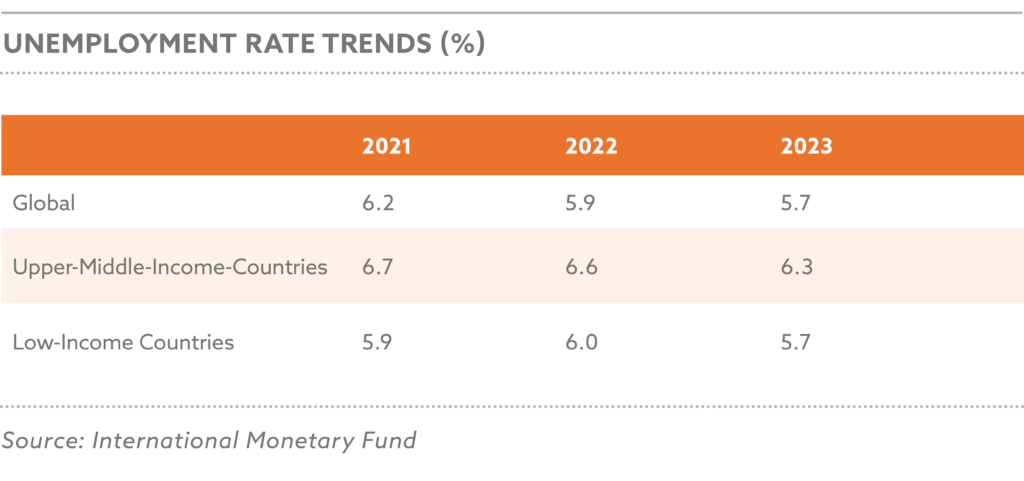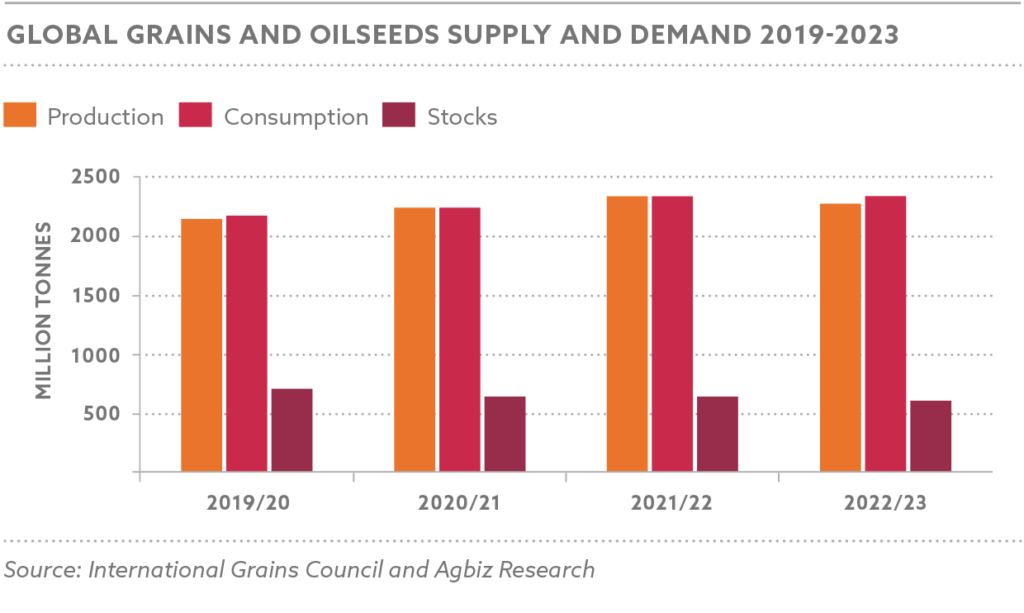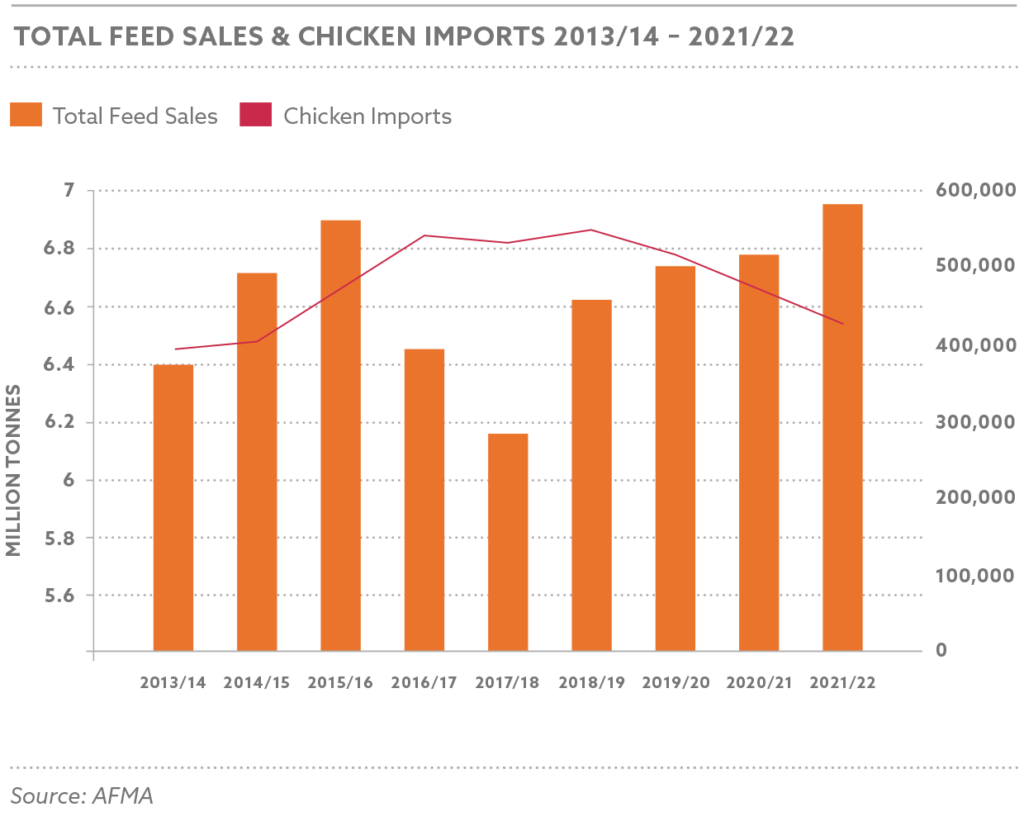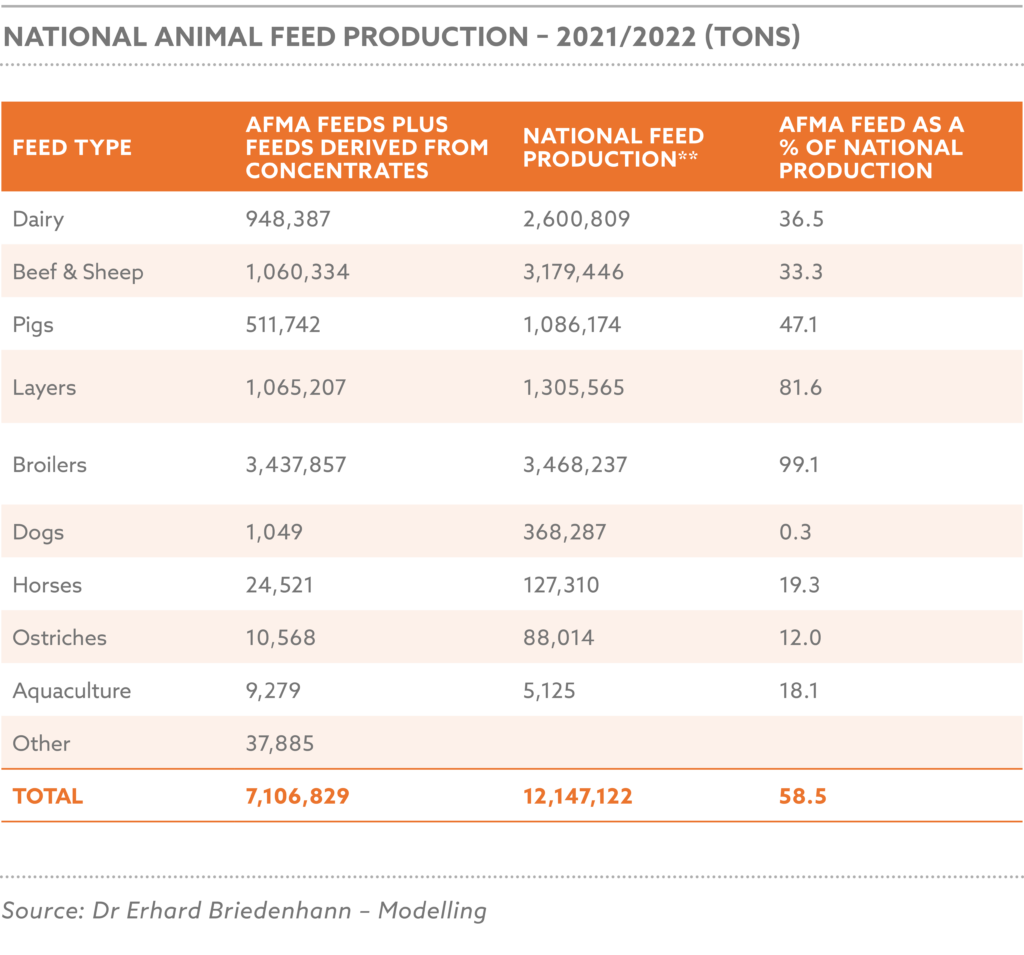Regulatory & International Standards
One key part of IFIF’s mission is to promote a balanced regulatory framework to support a fair global playing field to facilitate market access and support the competitiveness of the feed and livestock industries.
IFIF’s work aims to support worldwide trade and ensure that future demands for feed and food can be met efficiently and these efforts continues in 2022 and 2023.
Engagement with international institutions is vital for this and IFIF collaborates with the FAO, the World Organisation for Animal Health (OIE), the Codex Alimentarius Commission, and other international bodies to help set international regulatory standards for the whole feed chain and support fair trade.
IFIF has a strong collaborative relationship with the FAO dating back many years, and IFIF and the FAO Animal Production and Health Division organize the annual International Feed Regulatory Meeting (IFRM). The IFRM continues as a successful joint effort to bring together government officers, intergovernmental organizations, academia and feed and food companies and organizations from around the world to discuss key issues of relevance, including mutual recognition and global feed safety standards.
IFIF together with regulatory authorities and feed and feed ingredient associations from Canada, the European Union and the United States launched the International Cooperation for Convergence of Technical Requirements for the Assessment of Feed Ingredients (ICCF). This important international cooperation aims to develop and establish common guidance that covers technical requirements for the assessment of feed ingredients, including new uses of existing feed ingredients.
As animal health is also a vital component of the feed chain, IFIF holds a cooperation agreement with the World Organisation for Animal Health (WOAH). The two organizations work together with the regards to the prevention and management of infectious diseases, including zoonotic disease, as well as the support for the development, updating and implementation of OIE standards and guidelines.
Finally, feed safety is relevant to Codex Alimentarius work as it impacts on the safety of food. IFIF is a Codex Alimentarius recognized NGO and was actively involved in the development of the Codex Code of Practice of Good Animal Feeding, as well as a member of the ad hoc Codex Intergovernmental Task Force on Animal Feeding (TF AF).
Codex work on animal feed continues in individual Committees (within their mandate) and the participation of IFIF feed experts in Codex work contributes to keep feed safety on Codex agenda.
International Feed Regulators Meeting (IFRM)
The annual International Feed Regulators Meeting (IFRM) organized by IFIF in cooperation with the FAO provides an opportunity for regulators and feed industry professionals from across the globe to exchange their thoughts and discuss concrete ideas for providing safe feed and food in a sustainable manner around the world.
16th International Feed Regulators Meeting (IFRM)
The 16th annual International Feed Regulators Meeting (IFRM) organized by the International Feed Industry Federation (IFIF) and the Food and Agriculture Organization of the United Nations (FAO) brought together feed industry representatives and government officials from around the world to discuss critical issues facing the feed sector with IFIF and the FAO in Atlanta, USA in January 2023.

Participants from across the world and from key regulatory bodies joined the 16th IFRM. The meeting, yet again, proved to be an important opportunity for the global feed industry and feed regulators to discuss key issues for the feed and food chains, including important work on nutritional innovation strategies to improve animal health and welfare, an update of Codex Alimentarius work with relevance to feed, as well as a very timely workshop on emerging feed sources and technologies in a circular bio-economy context.

Other topics discussed at the 16th IFRM included a panel on the successful work of the International Cooperation for Convergence of Technical Requirements for the Assessment of Feed Ingredients (ICCF), which aims towards convergence of technical requirements specific to feed additive/ingredient authorization across regions, as well as presentations on key feed issues in Thailand and Vietnam.
15th International Feed Regulators Meeting (IFRM)
The 15th International Feed Regulators Meeting (IFRM), organized jointly by the Food and Agriculture Organization of the United Nations (FAO) and the International Feed Industry Federation (IFIF), took place virtually in 2022 as a result of the COVID-19 Pandemic and was held via online conference on 24-25 March 2022.
For more information about the IFRM please click here.
International Cooperation for Convergence of Technical Requirements for the Assessment of Feed Ingredients (ICCF)
IFIF together with regulatory authorities and feed and feed ingredient associations from Canada, the European Union and the United States launched the International Cooperation for Convergence of Technical Requirements for the Assessment of Feed Ingredients (ICCF).
This important international cooperation aims to develop and establish common guidance that covers technical requirements for the assessment of feed ingredients, including new uses of existing feed ingredients.
The founding members of the ICCF include the Canadian Food Inspection Agency (CFIA), the European Commission (DG SANTE), the U.S. Food and Drug Administration (FDA), as well as the American Feed Industry Association (AFIA), the Animal Nutrition Association of Canada (ANAC), the EU Association of Specialty Feed Ingredients and their Mixtures (FEFANA) and the International Feed Industry Federation (IFIF).
In 2022 and 2023, the ICCF worked on and published two more guidance documents, bringing the total to seven:
- Stability Testing of Feed Ingredients – March 2019
- Sub-chronic Oral Toxicity Testing in Laboratory Animals– March 2019
- Homogeneity Testing of Feed Ingredients – September 2020
- Manufacturing Process and Specification – June 2021
- Genotoxicity Testing of Feed Ingredients – April 2021
- Feed Ingredients Environmental Risk Assessment Approach – Sep. 2023
- Identification and Characterization of Feed Ingredients – Sept. 2023
The ICCF is the result of a concerted effort to bring together feed regulators and industry feed associations to work together to develop common guidance documents for technical requirements needed in the assessment of feed ingredients. This will benefit not only the three regions covered, as the guidance documents will be made available for reference and use by other jurisdictions around the globe.
The ICCF should help to facilitate free and fair trade of feed ingredients as well as support the feed and food chain as it works to safely and sustainably meet the global growing demand for animal protein.
The ICCF Steering Committee, made up of representatives from the founding members of the ICCF, is responsible for defining the priorities and activities of the project and establishing and overseeing the Expert Working Groups, which will be tasked with developing specific technical guidance documents. As this initiative develops, observer countries will be invited to join the expert groups and may be invited as non-voting members to the ICCF Steering Committee on an ad-hoc basis.
The ICCF builds on the work of the 2013 IFIF “Comparison of Regulatory Management of Authorized Ingredients, Approval Processes, and Risk-Assessment Procedures for Feed Ingredients” report, which covered synergies and gaps for product approvals in Brazil, Canada, China, EU, Japan, South Africa and USA. This report was drafted based on expert input and supported by government feed regulators and feed and feed ingredients associations in the seven regions covered.
For further information about the ICCF please visit: https://iccffeed.org
CODEX work relevant to animal feeding
IFIF is a Codex Alimentarius recognized NGO and has been actively involved in the development of the Codex Code of Practice of Good Animal Feeding and was an active member of the ad hoc Codex Intergovernmental Task Force on Animal Feeding (TF AF).
In 2022 and 2023 IFIF joined global regulators at the annual Sessions of the Codex Alimentarius Commission (CAC), where together with the FAO, we kept feed safety on the agenda.
IFIF is engaged to keep feed safety issues on the Codex agenda and together with the FAO, IFIF participates and organizes side events on feed safety in conjunction with Codex meetings.
As an official Codex Observer organization, IFIF was also actively involved in a number of important Codex electronic Working Groups, as well as active in the Codex Committee on Contaminants in Foods (CCCF), the Codex Committee on Residues of Veterinary Drugs in Foods (CCVRDF) and the Codex Committee on Food Import and Export Inspection and Certification Systems (CCFICS) and the Codex Committee on Food Labelling (CCFL).
This work will continue into 2024 and supports IFIF’s on-going efforts to keep feed safety issues on the Codex agenda.
In the past, IFIF has been actively involved in the development of the Codex Code of Practice of Good Animal Feeding and was an active member of the ad hoc Codex Intergovernmental Task Force on Animal Feeding (TF AF).
As a Codex recognized NGO, IFIF follows and inputs into in the work of the relevant Committees and participates in Codex Side Events addressing Feed Safety.
Taxonomy Name Updates
IFIF identified challenges facing the global feed industry from ‘taxonomy name updates‘.
In 2022 and 2023, an IFIF working ‘Group on Taxonomy Name Update’ worked to identify challenges facing the global feed industry from “taxonomy updates” including label inconsistencies, confusion in the market and difficulty importing into certain countries. IFIF is raising awareness with regulatory bodies around the world and urging cooperation between the regulators and industry to establish suitable procedures to update the nomenclature of microorganisms that works for both industry and regulators.
The global feed industry is challenged with the rapid scientific advancement in the taxonomic classification of microorganisms that is continuously leading to changes on the genus and species level. Whenever the scientific bodies update the taxonomic classification of a microorganism at the genus or species level, it impacts the name of the microorganism and as a consequence, the animal feed industry.
Taxonomic reclassifications like these do not change the safety nor the efficacy of the microorganisms, under their current conditions of use. They are a name change only.
The feed industry is heavily regulated across the globe and jurisdictions have different perceptions of updates caused by taxonomic reclassification and are utilizing different approaches on how to make the necessary updates leading to potential disruption in the international marketplace.
For further information please visit: https://ifif.org/our-work/project/taxonomy-name-updates/.
Quadripartite AMR Partnership Platform
In 2022 IFIF joined the AMR Multi-Stakeholder Partnership
In 2022, IFIF was invited to join the AMR Multi-Stakeholder Partnership as part of the private sector cluster. The Partnership Platform was launched on 18 November 2022, during World Antimicrobial Awareness Week, and marked an important step towards more coordination, communication, and collaboration among a wide range of stakeholders globally to address AMR.
IFIF brings the science-based work on nutritional innovation into the Partnership. The IFIF nutritional Innovation work demonstrates animal nutrition is an important contributor to promote animal health and welfare. Animal Nutrition is an important part of the solution to help to contain Antimicrobial Resistance (AMR). The feed sector plays a critical role in supporting animals’ optimal health with high resilience capabilities to stressors through safe and high-quality feed (feed formulation and processing) and access to nutritional innovation. It therefore is a key factor in the wellbeing of all livestock, fish and companion animals.
Adequate animal nutrition (defined as the provision of well-balanced and well formulated feed) combined with good hygiene practices on farms and proper housing are key in promoting animal health and welfare. A balanced diet of compound feed supported by specialty feed ingredients meets the animal’s physiological requirements and maintains the balance of the gut flora. Gut health is in fact a key factor in keeping animals healthy and resilient to stressors, such as heat or pathogens.
About the Partnership
The Food and Agriculture Organization of the United Nations (FAO), the World Organisation for Animal Health (OIE), and the World Health Organization (WHO) have been working together for decades to address risks at the human, animal, plant, and environment interface. Since 2018, the three agencies joined forces as a Tripartite to strengthen their long-standing partnership, with a renewed focus on tackling antimicrobial resistance (AMR) from a One Health approach.
The engagement of the United Nations Environment Programme (UNEP) in this work is also essential to support governments, civil society, and the private sector in addressing AMR risks related to the environmental sector. In 2022, the Tripartite became formally the Quadripartite as it welcomed UNEP in the alliance to accelerate coordinated strategy on human, animal and ecosystem health.
To advance a One Health response to AMR, the AMR Quadripartitee Joint Secretariat (QJS) was established with liaison officers based in FAO, OIE, UNEP and WHO. Its role is to coordinate and support the Quadripartite and collaborate with other United Nations agencies and stakeholders.
The Quadripartite’s goal is to preserve antimicrobial efficacy and ensure sustainable and equitable access to antimicrobials for responsible and prudent use in human, animal and plant health, contributing to achieving the Sustainable Development Goals (SDGs) and implementing further the Global Action Plan on AMR (GAP). To achieve this goal, the objectives are:
- To optimize the production and use of antimicrobials along the whole life cycle from research and development to disposal; and
- To decrease the incidence of infection in humans, animals, and plants to reduce the development and spread of AMR.
For more information visit: https://www.fao.org/antimicrobial-resistance/quadripartite/the-platform/en/




